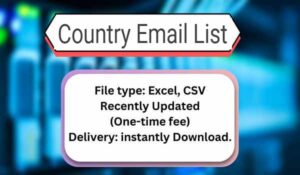Post by account_disabled on Jan 6, 2024 7:29:32 GMT
Aan optional layer of security anymore you must verify your emails to reach your subscribers inboxes. In this guide well walk you through email authentication standards share uptodate requirements by ESPs list the consequences of failing to verify your email domain ownership and share the best practices for authenticating your emails painlessly. What is email authentication Email authentication is the process of verifying domain ownership by the email sender. It validates you have rightful access to the email address youre sending from and you havent stolen it from someone else. There are four email verification methods SPF Sender Policy Framework DKIM Domain Keys Identified Mail DMARC.
Domainbased Message Authentication Reporting and Country Email List Conformance BIMI Brand Indicators for Message Identification Not familiar with these protocols Lets explain each in detail. Understanding email authentication protocols Whether youre setting up email authentication manually or using a dedicated tool you need to understand the core terminology. DNS A DNS record short for Domain Name System record is a database record used to map domain names to IP addresses and other information associated with a domain.

They can be different types but email authentication protocols like SPF DKIM and DMARC use TXT textbased DNS records. You can access your domains DNS records in your domain hosting platform. DNS record example in a hosting platformplatform SPF SPF is an email authentication method built around a list of IP addresses associated with a given domain. Only they have the right to send emails on behalf of that domain. Back to SPF it requires defining a specific DNS record for a domain listing the authorized email servers that are allowed to send emails on behalf of that domain. The mail server youre sending to checks your domains SPF record. If the sending servers IP address matches one of the authorized IP addresses listed in the SPF record the email is considered authentic. If not the email may be flagged or rejected. Tip You can use an SPF validation.
Domainbased Message Authentication Reporting and Country Email List Conformance BIMI Brand Indicators for Message Identification Not familiar with these protocols Lets explain each in detail. Understanding email authentication protocols Whether youre setting up email authentication manually or using a dedicated tool you need to understand the core terminology. DNS A DNS record short for Domain Name System record is a database record used to map domain names to IP addresses and other information associated with a domain.

They can be different types but email authentication protocols like SPF DKIM and DMARC use TXT textbased DNS records. You can access your domains DNS records in your domain hosting platform. DNS record example in a hosting platformplatform SPF SPF is an email authentication method built around a list of IP addresses associated with a given domain. Only they have the right to send emails on behalf of that domain. Back to SPF it requires defining a specific DNS record for a domain listing the authorized email servers that are allowed to send emails on behalf of that domain. The mail server youre sending to checks your domains SPF record. If the sending servers IP address matches one of the authorized IP addresses listed in the SPF record the email is considered authentic. If not the email may be flagged or rejected. Tip You can use an SPF validation.
